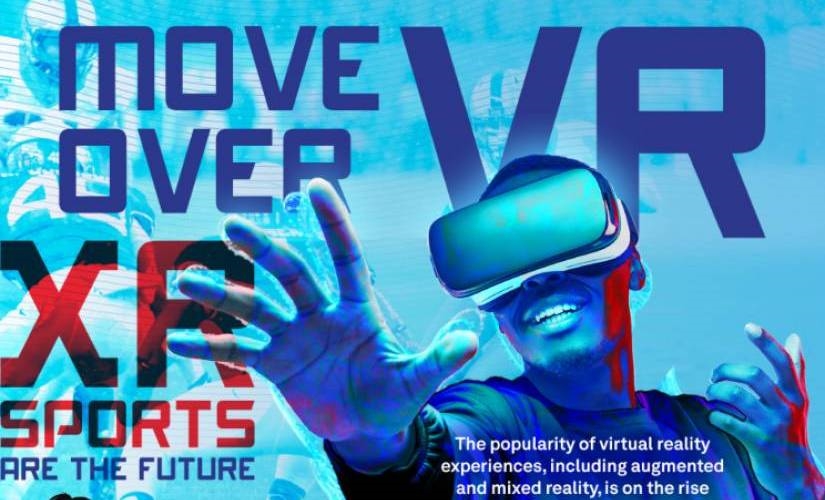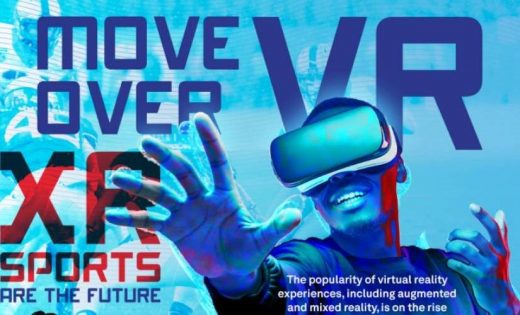Extended Reality and the Convergence of AR and VR
Extended Reality and the Convergence of AR and VR

Pandemics and economic downturns are always times of innovation as we try to navigate our way forward through difficulties. We have had the benefit of technology to help us get through this unprecedented time in history, and that has salvaged much of our daily lives that could have been destroyed. Here is extended reality and the convergence of AR and VR.
The internet kept us connected to work, each other, and school, preventing even more devastating future issues.
Can you even imagine what this pandemic would actually look like right now if, Globally, we had been shut completely down with ZERO technology helping us? The devastation is unimaginable to us at this point in time. No school, no phone, no doctors, –no Netflix binging? Yes, the internet has kept us connected to work, each other, able to buy necessities online, and able to conduct our schools.
Throughout this COVID pandemic — new ways of using established technologies have emerged, paving the way to the future past the pandemic and economic recovery.
Working from home.
Working from home has been one of the catalysts for progress. As companies chose between shutting down and trusting employees to work from home, people began to experiment with VR meetings, virtual conferences, and more.
Virtual reality and augmented reality have been a lifeline for people who want to get out of their environment and experience something “normal” for a change. Now, these technologies are starting to converge with artificial intelligence and other technologies to create extended reality or XR technology.
What is XR?
Extended reality technology mixes virtual reality, augmented reality, mixed reality, and artificial intelligence technologies to create an immersive experience that adapts to user inputs. The technology uses biomechanical modeling to both input and model human movement in a more natural way. It uses motion tracking to reduce the need for too many sensors to detect player movements.
The adaptability to machine learning presents gameplay to a player’s abilities in order to provide a stimulating and challenging environment. With all that is involved in the tech of XR — the student need not be alone in their learning challenges. And these types of tech will stick with children, where the parents and teachers don’t have the time or patience.
Interacting with XR includes a lightweight headset that blends the surrounding environment with the virtual one. Programs monitor and record movements of the human player as well as any equipment they are using in gameplay. A physics engine monitors inputs and simulates real-world reactions to every action.
Practical Everyday Uses for XR Technology
For work, many of us are tiring of video conferences, and in fact, there’s even an emerging phenomenon known as “Zoom Fatigue.”
Extended reality technologies give us a new way to experience meetings and conduct business that feels more like an in-person meeting, thanks to the ability to appear in different scenes. The enhanced technology is also proving useful for virtual conferences and continuing education applications.
What about your personal life?
When it comes to our personal lives, many of us have given up on traveling for the duration of the pandemic. But this doesn’t mean we can’t experience new places. Thanks to extended reality technology, we can travel to far off destinations and even ancient locations.
History lessons.
Oculus Quest has been a popular interface for teaching history as well as to travel to faraway locations throughout the pandemic.
You can visit everywhere from Machu Picchu to the ancient ruins of the City of Petra to modern-day locations like Portugal and Switzerland. You can even go virtual scuba diving or climb virtual mountains when you just need to get away from the reality of social distancing.
You are provided with more physical activity than you thought.
Physical activity is another area where extended reality is innovating. On Oculus Quest, games like Beat Saber and The Climb allow you to get physical activity in a virtual formal.
Beat Saber involves “cutting” blocks to the beat of dance music and can be set to different difficulty levels depending on your physical prowess.
The Climb allows you to experience a virtual outdoor rock climbing adventure from the safety of your own home while getting you up off the couch to participate.
XR and COVID-19
These technologies have been invaluable throughout the pandemic, giving people new opportunities to experience remote work, remote play, and remote exercise.
The WHO has recommended that people get daily physical activity, which has proven difficult. When we have been expected to remain indoors for the duration of the pandemic — it’s tough on body and soul.
Scientists say this winter could be brutal again — can we stand it? To be quarantined and only leave to walk or run in our neighborhoods or to get necessary supplies?
XR has allowed us to stay fit and connected to one another despite the COVID-19 outbreak, preventing pandemic couch potatoes. For a few of us building up our COVID-19 ten pounds, it’s time to get it off now and keep it off with an inplace system.
XR Meets AI and Sports
One of the experiences people have been missing during the pandemic is competitive sports. For most sports, it hasn’t been safe to play in person with others. Some sports have opened up — but for how long?
For close contact sports, the reason is obvious – respiratory droplets spread further and more readily when people are exercising, and contact just exacerbates this issue. But even with sports where there is little physical contact, there are still balls that travel back and forth between people.
Real gameplay is important to most people who play competitive sports.
Already there are XR and VR training simulators for games like golf and tennis. In an extended reality format, people can use real golf clubs and practice their game at famous golf courses all over the world. Sensors are outfitted on the golf clubs to give players a realistic feel for the game they are playing.
Artificial intelligence plays a big part in these games.
AI learns how a player plays and adapts gameplay to be challenging and engaging. High-speed cameras, sensors, and artificial computer vision all converge to create a realistic experience. The AI also predicts whether a movement will be successful and projects that prediction into the game as a resulting reaction to a player’s action.
AI can even be used to recommend better actions and techniques, thus improving a player’s game as they would with the help of a coach.
XR Sports and Social Distancing
Realistic experiences for golf and tennis are one thing, but many people who play sports regularly are missing a key component – competition. But not just the competition — the interaction with other human beings. We all thrive on interaction with each other.
Cybersports is a portable XR sports training and entertainment simulator AI biomechanical modeling and smart balls with embedded sensors to generate online gameplay with the help of a cyber portal.
The portable XR can be used for training and recreation. Sure, artificial intelligence can provide some level of competition in such games, most serious competitive sports players will find they would rather compete with real people. But these games are providing serious relief from being stuck in the house. Yes, you know you aren’t on your regular schedule of hitting the gym — but this XR will save your sanity.
Physical venues for XR sports.
Emerging XR technology such as Sportstacular takes place in a physical venue where people can compete against others. The competition takes place in a socially distanced pod, and leaderboards track winners across multiple locations.
The physical venue sports-technology gives people a safer way to play sports during the pandemic. As with many of the innovations that have come about because of the pandemic — XR sports have been so successful, they are likely here to stay.
Is XR the Future of Sports?
Just like remote work proved to be no big deal and is likely to stick around post-pandemic, the technological advances made in extended reality technologies are equally likely to stick around.
Traveling using VR is a valuable learning tool that can be used in classrooms once in-person school returns to a baseline of normalcy.
There will always be times when going somewhere in person just isn’t feasible. The XR technology is being adopted en masse because of the pandemic, but now, people have started to figure out how useful it can be elsewhere.
There are a number of reasons why extended reality will continue to be popular after the COVID safety aspect passes. For sports — innovation in technology has always been successful — and fun.
Competitive sports are subject oftentimes to being rained out, and extended reality offers a guarantee against that downer.
It can also be difficult to find competitors on your level, and being able to compete with people in far off locales can mitigate the boredom that sets in with a serious lack of sports acumen. But, seriously, I tell my friends to level up — and they usually take the challenge.
What’s more, AI is, sometimes, the only thing that can really compete against top athletes, giving them the opportunity to become even better at their sport through the use of XR.
The Future of XR Post-Pandemic
The pandemic has shown us what technology can do, and has come out with incredibly innovative and creative ways to use it long after it stops being a necessity post-pandemic.
From education to remote work to sports, extended reality opens up a world of possibilities.
Are you ready to start playing real sports with real competition on a virtual platform?
The post Extended Reality and the Convergence of AR and VR appeared first on ReadWrite.
(22)


